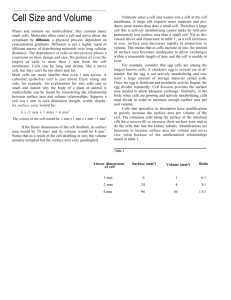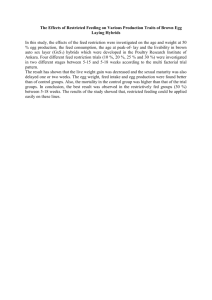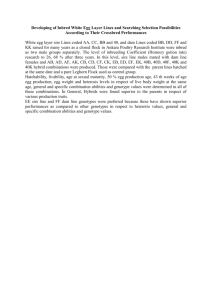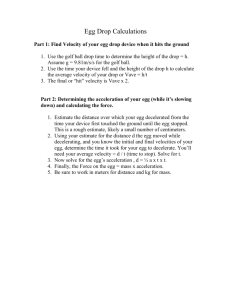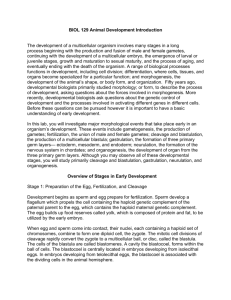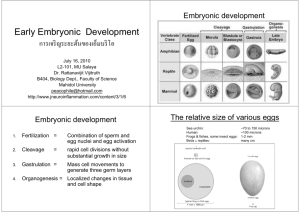Worksheet for Morgan/Carter Laboratory #25 “Animal Development”
advertisement
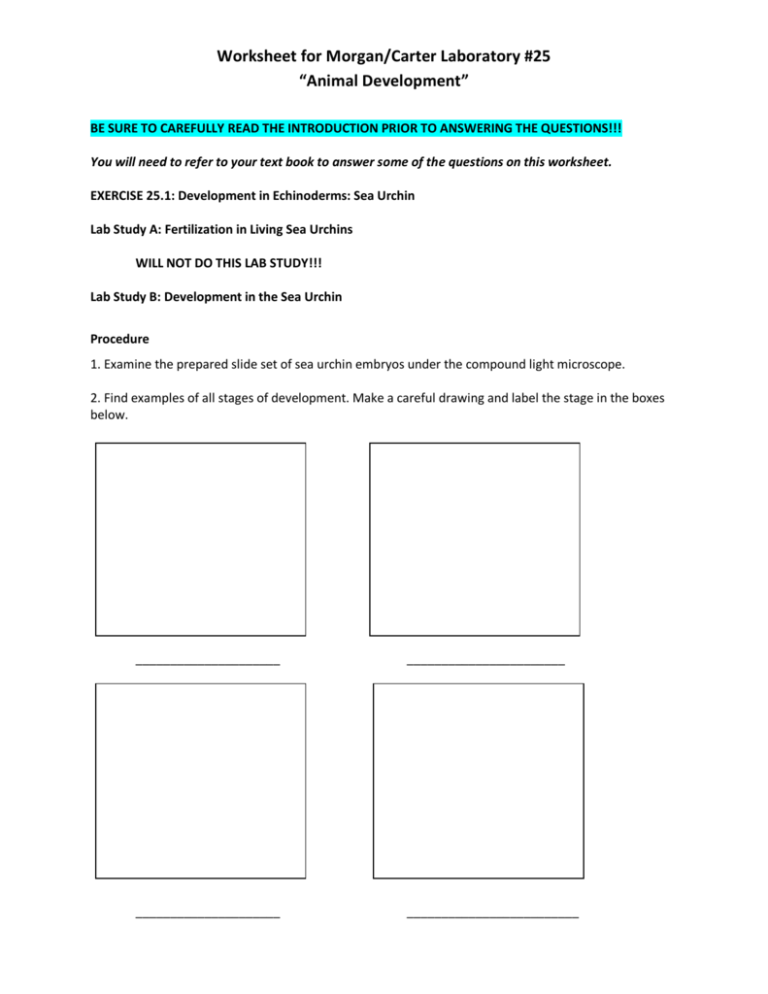
Worksheet for Morgan/Carter Laboratory #25 “Animal Development” BE SURE TO CAREFULLY READ THE INTRODUCTION PRIOR TO ANSWERING THE QUESTIONS!!! You will need to refer to your text book to answer some of the questions on this worksheet. EXERCISE 25.1: Development in Echinoderms: Sea Urchin Lab Study A: Fertilization in Living Sea Urchins WILL NOT DO THIS LAB STUDY!!! Lab Study B: Development in the Sea Urchin Procedure 1. Examine the prepared slide set of sea urchin embryos under the compound light microscope. 2. Find examples of all stages of development. Make a careful drawing and label the stage in the boxes below. _____________________ _______________________ _____________________ _________________________ ________________________ ________________________ _________________________ ________________________ With regard to early cleavage in the sea urchin, is the entire zygote involved in early cleavage? What happens to the size of cells as the cell number increases? Do they get bigger or smaller in these early stages? Given your answer above, how do these cells compare in size to the original zygote cell? How does the size of these cells compare to the size of the original fertilized egg? How does the overall size of the blastula compare to that of the fertilized egg? Which embryonic germ layer lines the inner surface of the archenteron? In this animal, what will be formed from the blastopore at the opposite end of the arachenteron? (NOTE: what is the difference between deuterostomic and protostomic development?) Which embryonic germ layer lines the outer surface of the embryo? Discussion 1. What is the advantage of having species-specific receptors on the plasma membrane of the egg? 2. What type of egg does the sea urchin have (protostomic or deuterostomic)? 3. What pattern of cleavage is seen in the sea urchin (isolecithal, telolecithal, alecithal / holoblastic or meroblastic)? EXERCISE 25.2: Development of an Amphibian WILL NOT DO THIS LAB STUDY!!! EXERCISE 25.3: Development in the Zebrafish Procedure 1. Obtain a small watch glass with zebrafish in various stages of development. View them with your stereoscopic dissecting microscope. Draw a picture of two different stages of development you observe in the boxes below: Discussion 1. What type of egg does the zebrafish have (isolecithal, telolecithal, alecithal)? 2. Is the cleavage in the zebrafish holoblastic or meroblastic? EXERCISE 25.4: Development in a Bird: The Chicken Procedure 1. Observe a chicken egg in the early stages of development (e.g. 24 hours). Most eggs sold for human consumption are purchased from commercial egg farms where the hens are not allowed contact with the roosters. You will be studying a fertilized egg. Note the picture of an unincubated egg in Figure 25.8. Draw this same picture yourself in the box below and label the parts as shown in the figure. Picture of an Unincubated Chicken Egg 3. Obtain a prepared slide of a 24-hour chick in the stage of neurulation. Refer to Figure 25.10. In the box below, draw a picture of what you observe on the slide and use the labeling in Figure 25.10 to label the parts you observe. See if you can identify the following parts: primitive streak, neural tube, neural folds, neural groove, somites and spinal cord region. 24 hour Chick with Neurulation Parts Labeled 4. Obtain a 48-hour and 96-hour chick egg. CLOSELY FOLLOW THE DIRECTIONS IN THE LAB MANUAL FOR THE DISSECTION OF A FERTILIZED EGG. Refer to Figures 25.11 and 25.12.Using the naked eye and perhaps your dissecting light microscope, see if you can identify the following parts: heart, atrium, ventricle, vitelline blood vessels, brain, eyes, spinal cord, somites, anterior limb buds, posterior limb buds. In the box below, draw a picture of a 48-hour chick (as shown in Figure 25.11) and label the major parts. 48-hour Chick 6f. In the table below, describe the roles of the extraembryonic membranes. You may wish to refer to your text. Extraembryonic Membrane Amnion Allantois Chorion Yolk Role Discussion 1. What type of egg is the chicken egg (Figure 25.2) (isolecithal, telolecithal, alecithal)? 2. This egg undergoes what type of cleavage? 3. What are the major differences between the 48-hour and 96-hour chick? REVIEWING YOUR KNOWLEDGE 1. Define the following terms: Cleavage: Blastula: Gastrula: Involution: Archenteron: Blastocoel: Blastopore: Isolecethal: Telolecithal: Alecithal: Meroblastic: Holoblastic: Neurulation: Organogenesis: Animal pole: Vegetal pole: Blastoderm: Ectoderm: Mesoderm: Endoderm: Neural tube: Neural groove: Neural fold: 2. USE YOUR TEXT to list the anatomical structures that are derived from each of the following germ layers. Germ Layer Endoderm Mesoderm Ectoderm Organs and/or Tissues 3. Define primitive streak and epiblast, two structures identified in the gastrula stage of the chick (refer to page 666). Primitive streak: Epiblast: 4. What is the difference between epiboly and involution?

